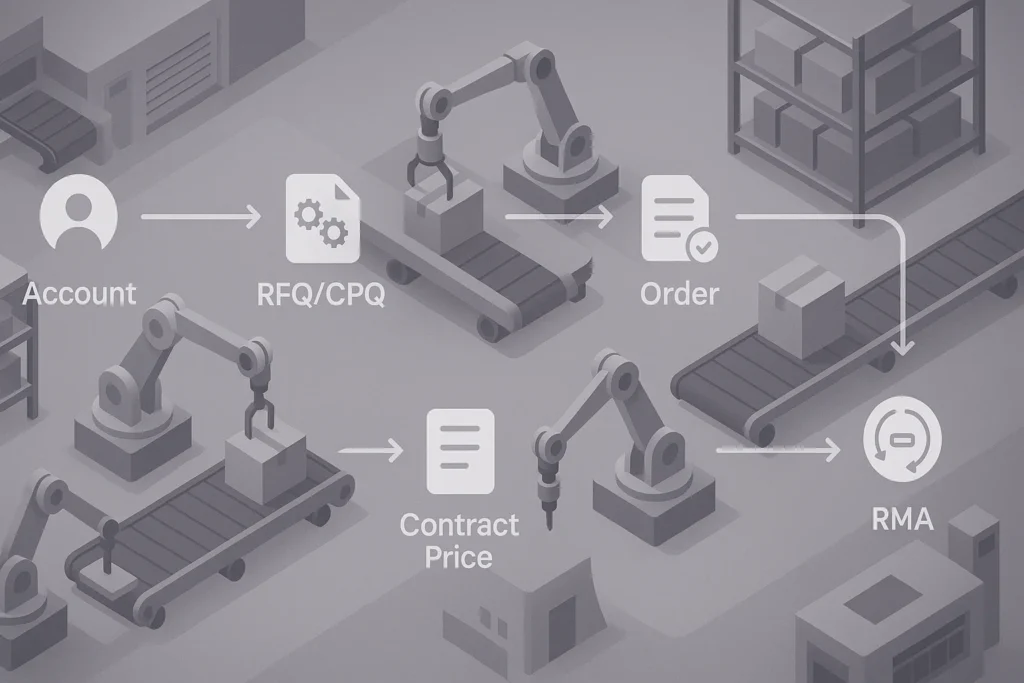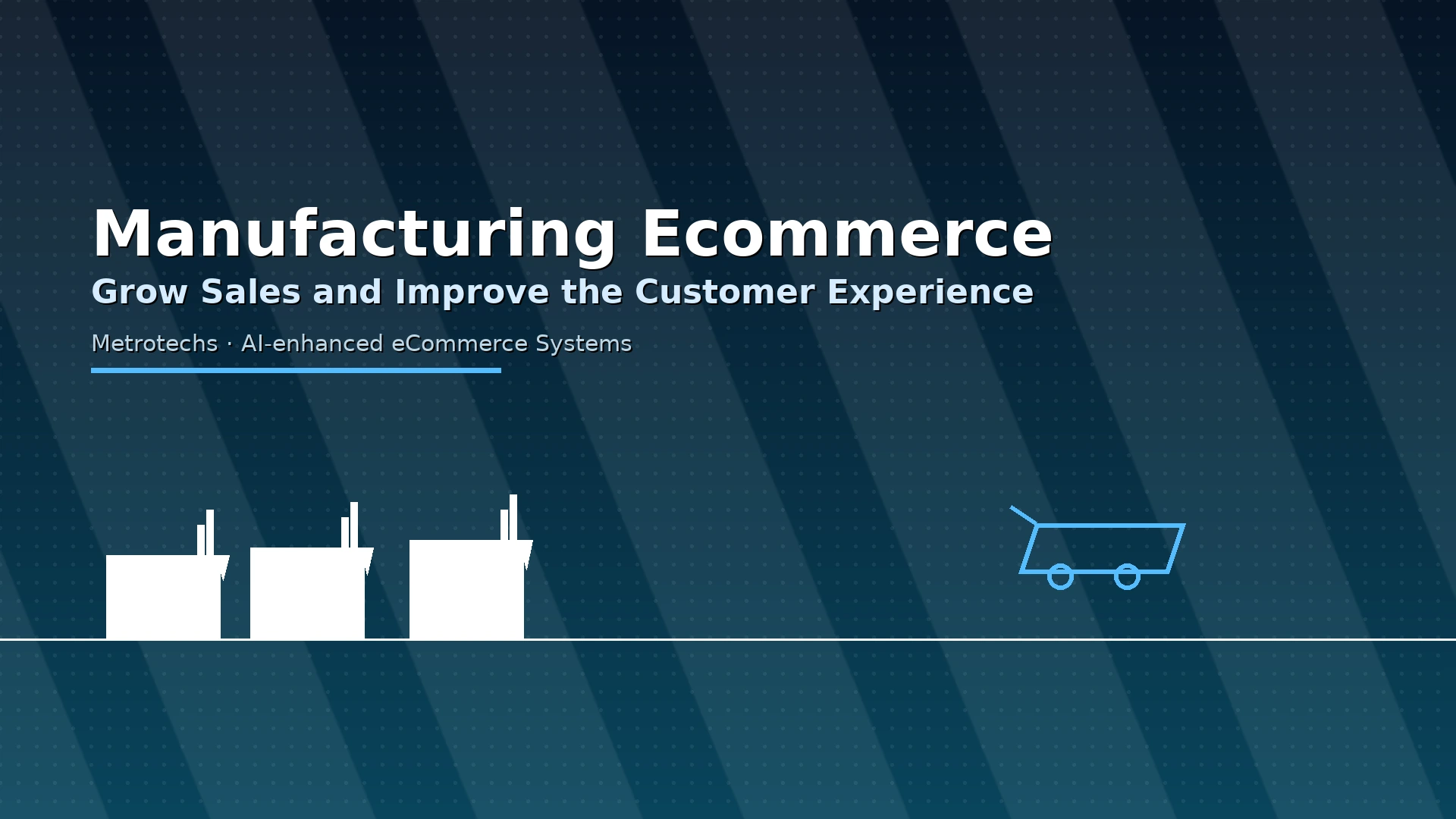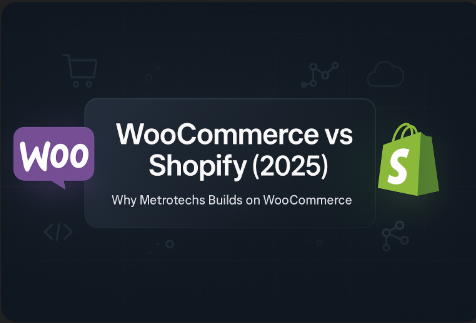The M2B Commerce Stack: How Manufacturers Build B2B That Scales
TLDR: There are three smart ways to build manufacturer-led B2B: a platform-led stack when you need speed, a composable stack on your cloud when you need control, and an SAP-centric stack if you are already committed to that ecosystem. Add CPQ, PIM, tax, payments, search, and identity. Measure what matters: how fast quotes become orders, how much dealers can self-serve, order accuracy, fill rate, margin by channel, and uptime.
Why the choice of systems matters
M2B means you, the manufacturer, are the seller of record. Your buyers are dealers, distributors, integrators, and strategic accounts. This model works when pricing rules are clean, configuration follows how you actually build and ship, and the data stays in sync with your ERP. Good systems turn those rules into software. Bad systems create manual work and channel friction.
Below are the three build paths we recommend most often, plus the core add-ons every serious M2B program ends up using.
Path 1: Platform-led for the fastest time to value
If you need a working dealer portal quickly, start here. Choose a B2B platform that already handles corporate accounts, contract price lists, RFQ to Quote to Order, and fast ordering. Connect it to your ERP and CRM. Add CPQ when the team is ready.
When this fits
- You want something live in months, not quarters.
- Your catalog and pricing rules are clear.
- You prefer vendor features over heavy custom code.
What it looks like
- Dealers log in and see contract pricing pulled from the ERP.
- They build a quote and turn it into an order without rekeying.
- Inside sales handles exceptions instead of typing orders.
- Channel rules live as policy, so disputes go down.
Result: Shorter quote to order time. Fewer pricing arguments. A cleaner handoff to fulfillment.
Path 2: Composable on your cloud for maximum control
This is the vendor-neutral route. Use API-first commerce services and your own front end. Run event-driven integrations on AWS. You own the code and tune dealer and CPQ flows to match your products and policies.
When this fits
- You want full control of the dealer experience.
- Your configuration rules are complex and tied to routing or lead times.
- You need deep integrations with ERP, PLM, WMS, and custom services.
What it looks like
- A Next.js portal for dealers and account teams.
- A commerce core that exposes catalogs, price books, and quotes via APIs.
- A CPQ service that validates options against real operations.
- Orchestration on AWS using API Gateway, Lambda, SNS/SQS, Step Functions, and EventBridge.
- Clear data contracts so pricing, credit, tax, and inventory stay consistent.
Result: More control, fewer black boxes, and a stack that grows with your roadmap.
Path 3: SAP-centric if you are already invested
If your enterprise runs on SAP, the natural path is SAP Commerce Cloud with SAP CPQ and S/4HANA. The goals do not change. Make the rules explicit, keep data aligned, and use governance to protect scope and budget. We can still run this in a vendor-neutral, KPI-driven way even if the tools are SAP.
The adjacencies that make M2B work
No matter which path you choose, the same foundations show up.
- CPQ for configurable products. Put tribal knowledge into rules. If options change dimensions, materials, or routing, validate them in software. Delivery dates should be promises, not guesses.
- PIM for product truth. Keep attributes, assets, and workflows in one place. Feed the storefront, CPQ, and ERP from the same source.
- Tax and compliance. Automate calculation and filings across regions. If tax is wrong, price confidence collapses.
- B2B payments and net terms. Dealers expect terms. Bring underwriting, invoicing, and collections into the same flow. Offer cards where they help, not as a crutch.
- Search and discovery. Buyers need to find parts fast. Use a proven search service or run your own on AWS.
- Identity and SSO. Enterprise buyers want single sign on and role based access. Map access to account hierarchies and approvals.
- Observability and analytics. Instrument everything. Watch success and failure rates for quotes, orders, and integrations. Report the few KPIs leadership actually cares about.
Two proven reference patterns
A) Platform-led with targeted extensions
Keep the platform storefront. Use native B2B features for accounts, price lists, quotes, and quick order. Connect CPQ by API. Let PIM own the product master. Plug tax and payments into native extension points. Tie ERP and CRM in via iPaaS or AWS services. Use governance to hold scope so value ships in short cycles.
B) Composable on AWS
Run a custom portal on the front end. Use an API-first commerce core. Make CPQ a dedicated service tied to product and routing data. Let PIM feed all channels. Move events through standard AWS primitives. Keep pricing, credit, tax, and inventory aligned with clear data contracts. The code is in your repos. The cloud is yours.
How to choose your path
Start with your constraints and goals.
- If speed to a reliable dealer portal is the priority, choose platform-led.
- If control and long term flexibility are non-negotiable, choose composable on AWS.
- If your enterprise is standardized on SAP, stay in that lane and apply strong governance.
Whichever you pick, prove it with a small pilot. Choose one product line and one dealer or account. Run the full journey from configuration to invoice. Confirm that the quote is accurate, the order syncs, the date is real, and the buyer can self-serve the basics. Use that data to plan the rollout.
What to measure
Executives do not need thirty charts. They need a simple view of health.
- Time from RFQ to order
- Dealer self-service rate
- Order accuracy
- Fill rate and on time delivery
- Contract price compliance
- Margin by channel
- Platform uptime
Review weekly. Prioritize the backlog based on impact.
How Metrotechs helps
We exist to make manufacturer-led commerce work at scale. We stay vendor neutral and outcome focused.
- Commerce Health Check (2 to 3 weeks). Baseline systems and processes, flag blockers, and deliver a prioritized plan tied to KPIs.
- Platform and Data Architecture Strategy (4 to 6 weeks). Define a clean target architecture, clarify data contracts, and select platforms without lock in.
- Performance Governance (retainer). PMO discipline that keeps scope, budget, and quality on track while we watch the metrics that matter.





